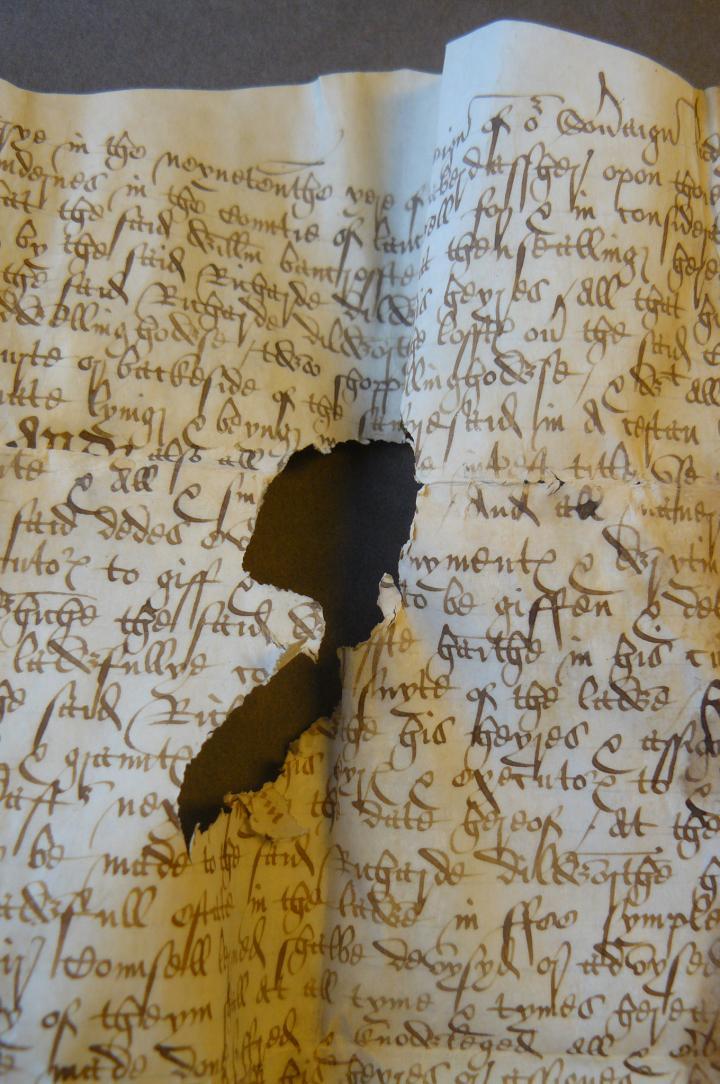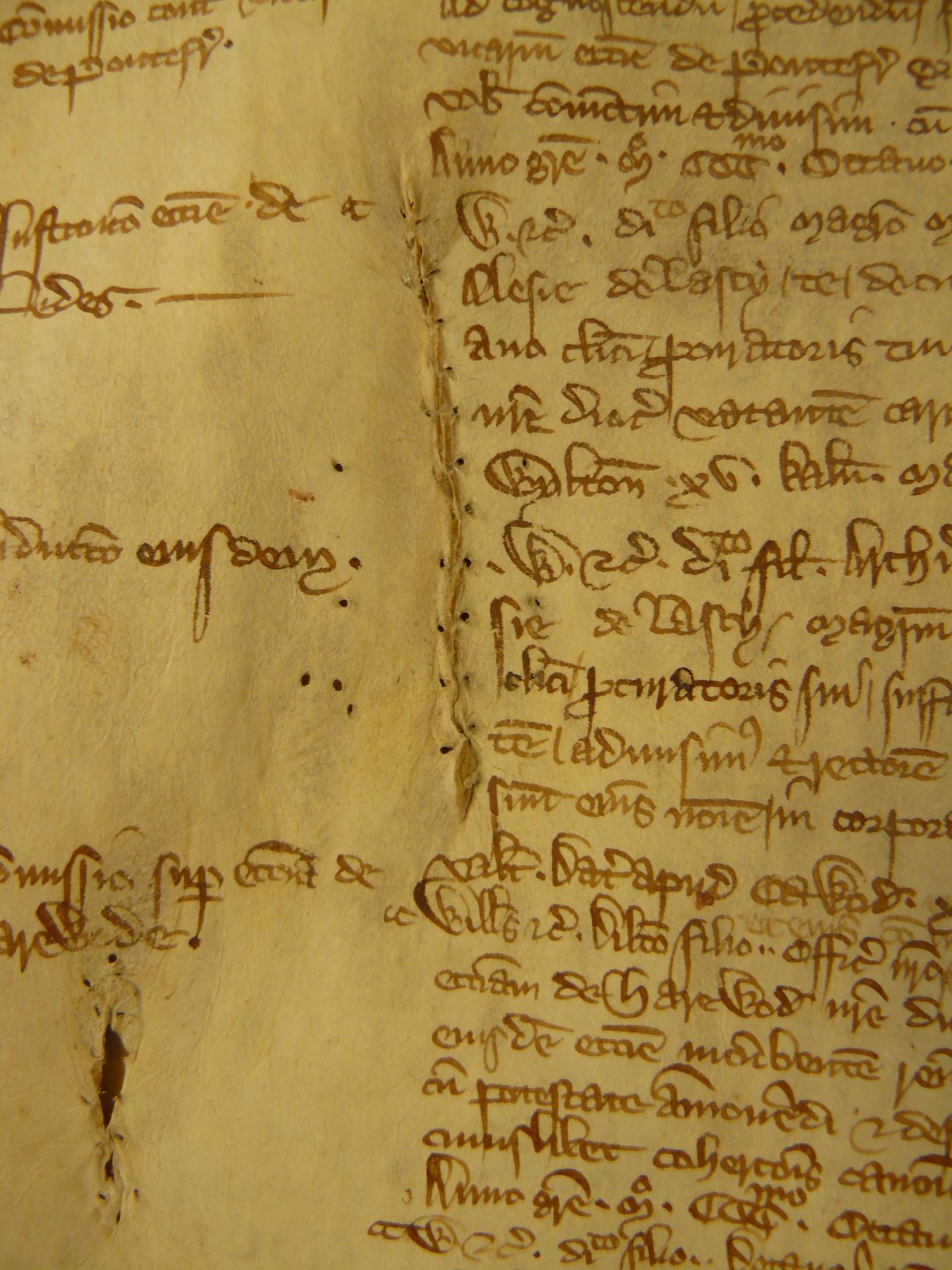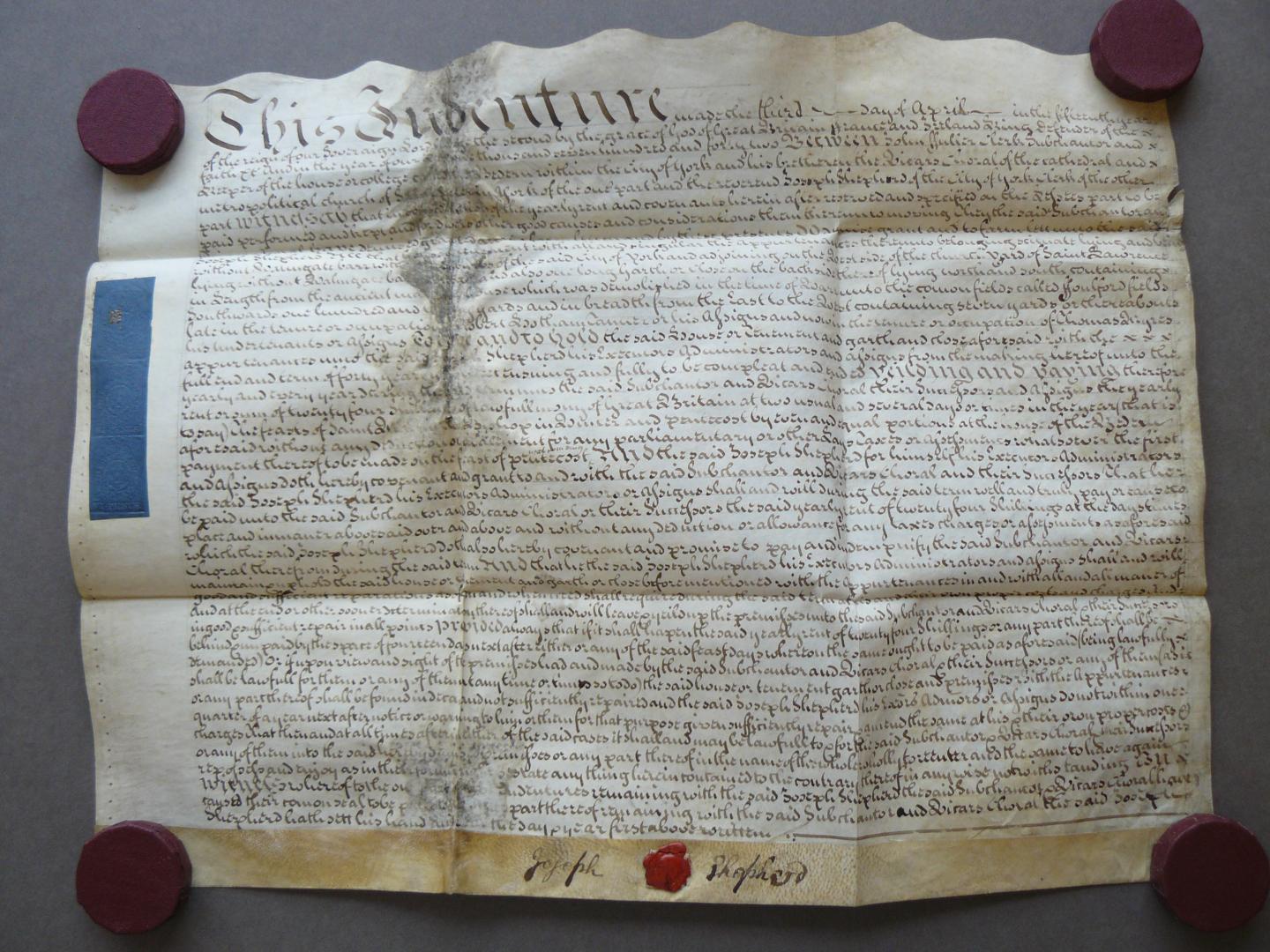There are not a lot of new stories to be found by the humanities in ancient parchments, but millions of documents stored in archives could trace agricultural development across the centuries, thanks to increasingly progressive genetic sequencing techniques.
Thanks to sequencing, vital information can be derived from the DNA of the parchment on which they are written.
Researchers extracted ancient DNA and protein from tiny samples of parchment from documents from the late 17th and late 18th centuries. The resulting information enabled them to establish the type of animals from which the parchment was made, which, when compared to genomes of their modern equivalents, provides key information as to how agricultural expansion shaped the genetic diversity of these animals.

An imaged parchment document from Yarburgh Muniments Lancashire Deeds YM. D. Lancs Jan. 13-14, 1576/7. By permission of The Borthwick Institute for Archives'.
To conduct their research, geneticists at Trinity extracted DNA from two tiny (2x2cm) samples of parchment provided by the University of York's Borthwick Institute for Archives. Meanwhile, researchers in the Centre for Excellence in Mass Spectrometry at York extracted collagen (protein) from the same parchment samples.
The first sample showed a strong affinity with northern Britain, specifically the region in which black-faced breeds such as Swaledale, Rough Fell and Scottish Blackface are common, whereas the second sample showed a closer affinity with the Midlands and southern Britain where the livestock Improvements of the later 18th century were most active.

This shows a sewn repair in Archbishop's Register 7 Greenfield, 1306-1311. By permission of The Borthwick Institute for Archives.
Professor of Population Genetics at Trinity College Dublin, Daniel Bradley, said, "This pilot project suggests that parchments are an amazing resource for genetic studies that consider agricultural development over the centuries. There must be millions stored away in libraries, archives, solicitors' offices and even in our own attics. After all, parchment was the writing material of choice for thousands of years, going back to the Dead Sea Scrolls.
"Wool was essentially the oil of times gone by, so knowing how human change affected the genetics of sheep through the ages can tell us a huge amount about how agricultural practices evolved."
If other parchments show similar levels of DNA content, resulting sequencing could provide insights into the breeding history of livestock - particularly sheep - before, during and after the agricultural improvements of the 18th century that led to the emergence of regional breeds of sheep in Britain.

This shows a parchment indenture from Vicars Choral Estates CC. V/C 10 York/Wal. April 2-15, 1742. By permission of The Borthwick Institute for Archives.
Professor Matthew Collins, of the Department of Archaeology at York, who heads the University's BioArCh research centre, said, "We believe the two specimens derive from an unimproved northern hill-sheep typical in Yorkshire in the 17th century, and from a sheep derived from the 'improved' flocks, such as those bred in the Midlands by Robert Bakewell, which were spreading through England in the 18th century. We want to understand the history of agriculture in these islands over the last 1,000 years and, with this breath-taking resource, we can."
Source: Trinity College Dublin




Comments